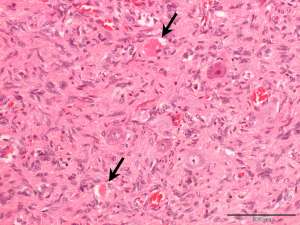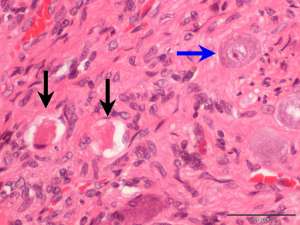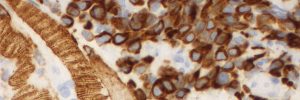Key-Gaskell syndrome in a cat
Post-mortem examination was performed in the case of a 2-year-old male neutered cat with suspected Key-Gaskell syndrome. The cat had had bilateral mydriasis, third eyelid protrusion, decreased tear production, dry mucous membranes and megaoesophagus, the last of which had resulted in regurgitation.


Final Diagnosis
Autonomic ganglionic neuron necrosis and depletion
Discussion
The clinical signs and histopathology are typical of feline dysautonomia, also known as Key-Gaskell syndrome. Loss of autonomic function accounts for most of the clinical signs. The cause is not known but similar to equine dysautonomia (‘grass-sickness’), a toxico-infectious aetiology is suspected. The clinical signs in cats are often acute and can include dilated pupils, protrusion of the third eyelid, dry mucous membranes, megaoesophagus, constipation, vomiting and dehydration. The histopathology in these cases reveals degeneration and loss of the ganglion cells within the peripheral autonomic ganglia, nuclei of cranial nerves and spinal cord. Dysautonomia has also been reported in dogs.

